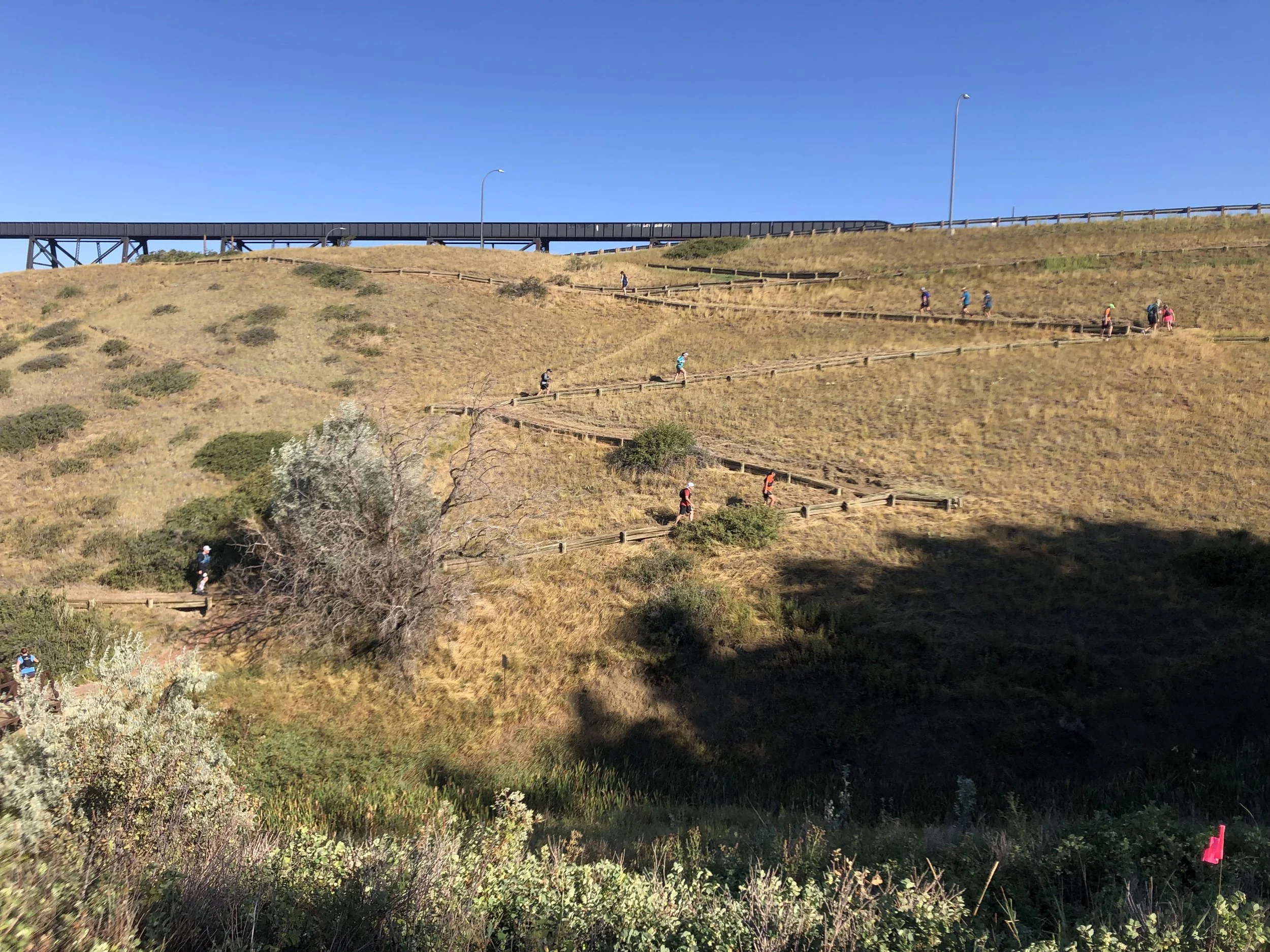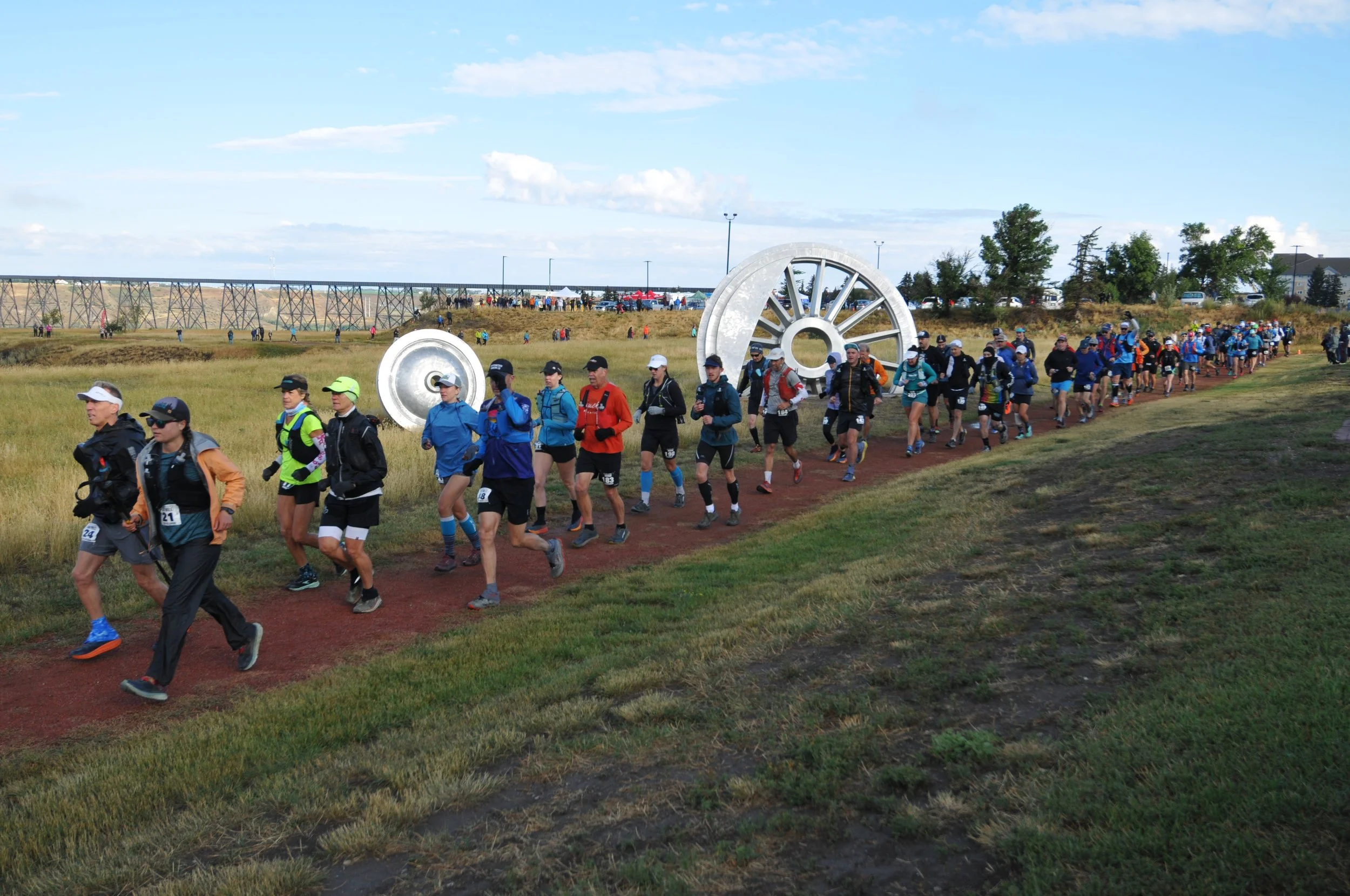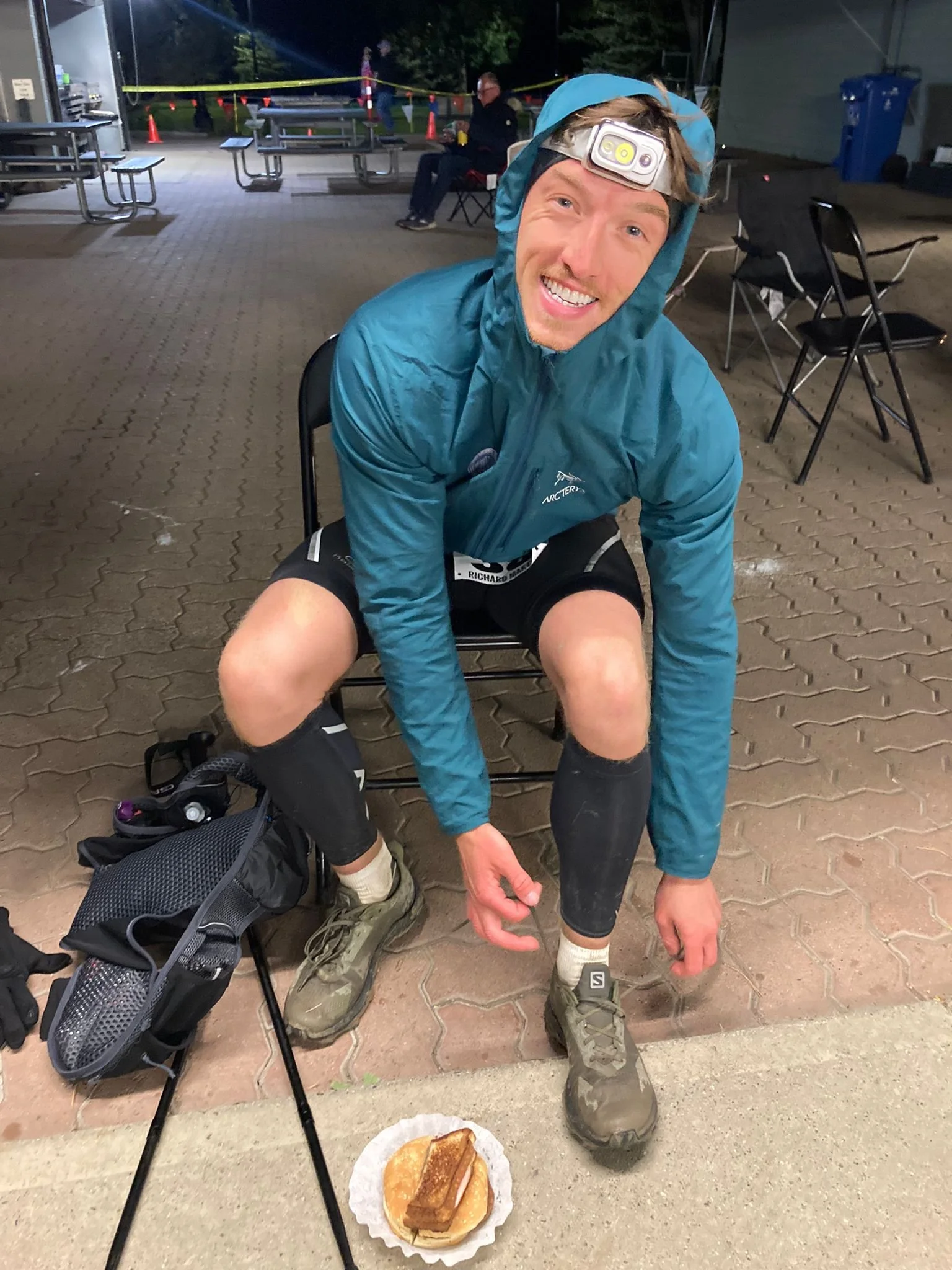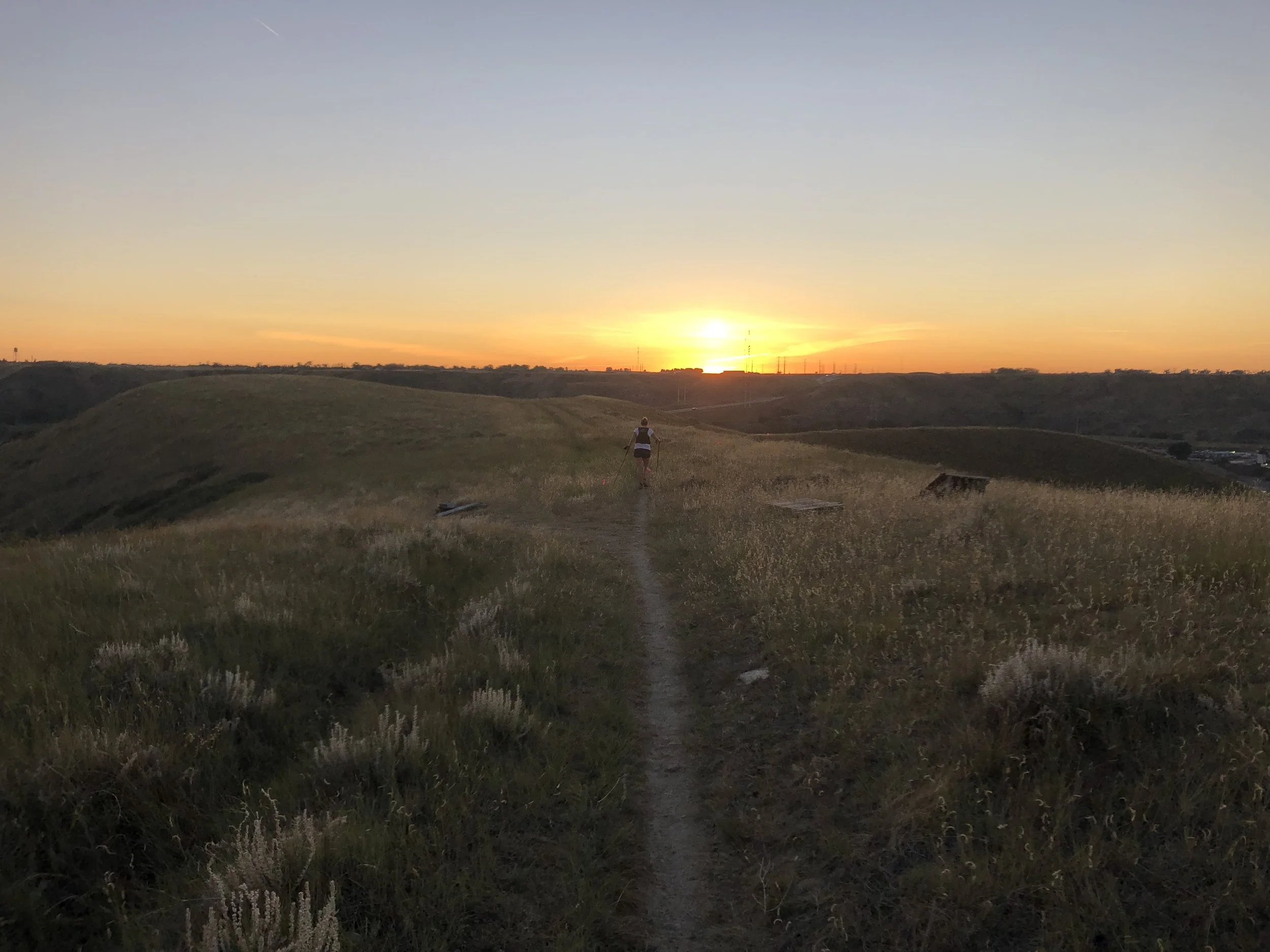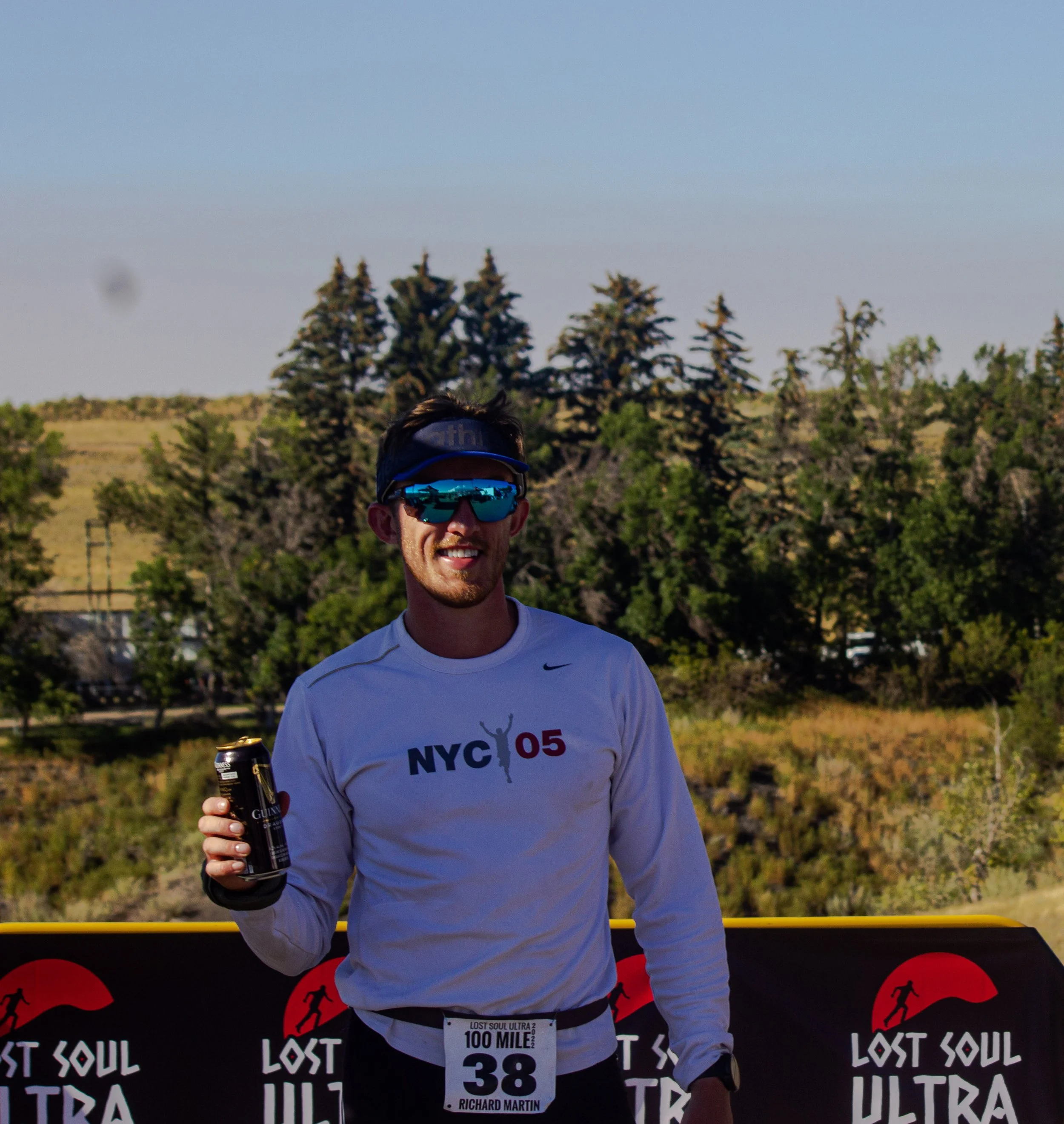100 Mile Lost Soul Ultra
When I was younger, my parents completed several marathons, which, at the time, was the pinnacle of running. Fast forward 20 years, and while marathons remain a significant achievement, they’ve been surpassed by even longer races—namely, the ultramarathon.
In recent years, I’d been progressing through the triathlon distances and reached the pinnacle event: the Ironman. Granted, there are even tougher versions of this, such as the double and triple Ironman, but for the average triathlete, an Ironman sits near the top.
I'm someone who thrives on a fresh challenge. Sure, I could train to run a faster marathon or Ironman, but the idea doesn’t excite me. My mind needs something entirely new to inspire me to push my limits again in the pursuit of self-growth.
Around 2020, David Goggins had emerged as a public figure embodying discipline and endurance. I eagerly watched every interview he gave, listening to his accounts of ultramarathons and was in awe of his accomplishments. It was while listening to him that the notion of running a 100-mile race struck a chord with me. It reignited my sense of adventure and curiosity to take on a new challenge.
After completing my Ironman at the end of 2020, I’d moved to Banff, Canada, to pursue a career change. While here I began my search for a 100-mile event and found the Lost Soul Ultra in Lethbridge, Alberta. Out of the races I could reasonably travel to, this one seemed the most beginner-friendly, if there ever is such a thing, considering it’s a 100-mile race. This race is structured as three laps with a cutoff time of 33 hours. Each lap is 50 km with about 1,150 meters (3,800 feet) of elevation gain and descent, plus an extra 11 km lap for us lucky 100-milers. While I wasn’t putting too much pressure on myself, I thought a 24-hour finish would be respectable. We’ll come to see how that idea played out.
For any first-timers, I’d recommend the Lost Soul Ultra. The support from organizers and volunteers, along with the Michelin-star-like aid stations, made this a lot of fun.
When I signed up, I had about a year to train, so I looked online and found the 100-Mile Improver Training Plan from the team at Marathon Handbook. This plan suited my goals and training window.
For those unfamiliar with where I now live, Banff is a small town in the Canadian Rockies, so this meant that all my training would be at altitude and mostly on trails, surrounded by majestic mountains and forests as far as you can see. Coming from Scotland, where the highlands are considered “wild”, adjusting to the Canadian backcountry was a bit of a culture shock. In Scotland, there’s no need to worry about predators lurking in the forests that might kill you. Danger mostly comes in the form of your own mistakes. But in Canada, there is an added element to consider, the wildlife.
For a newcomer like me, trail running in the Rockies was as much about becoming comfortable being alone in the woods, realizing that every tree stump is not in fact a bear ready to pounce and devour me, as it was about building endurance. On one 40-km out-and-back run, I passed a girl who casually mentioned that there was a bear at the end of the trail. I was about 5 km from my turnaround point and had no idea how far “the end” was beyond that. My UK-bred instincts screamed to turn back, but realizing this wasn’t so uncommon here, I pressed on. Needless to say, I was terrified for the rest of the run but, thankfully, never saw any bear.
I found the training for this race to be significantly more difficult than the Ironman i’d done. With Ironman training your constantly changing disciplines so while they may be hard sessions you never get tired of doing the same thing over and over again. Unfortunately, but not surprisingly, the training for a 100 mile race consisted of nothing but running day after day. Mentally I found this quite fatiguing. I also made the rookie mistake of not fuelling efficiently on my long runs which, by the time they’d crept above the 42km mark, turned each into a needlessly grueling event. Eventually I snapped out of this silliness and made sure that I was fuelling properly on my long runs. I put this error down to a lack of experience in these kinds of distances. I’d always been able to run 2-3 hours with some electrolytes and a few gels but for the kilometers I was now logging this was nowhere near enough.
SkiUphill in Canmore became my go to for supplies and often sage advice. Quite a few of the employees there were keen runners themselves and so I would pester them with questions anytime I was in to restock my supplies. I experimented with different bars and gels, textures and flavors to make sure that my stomach would be comfortable with what I would be feeding it on race day. I fear to think of the hundreds of dollars I spent during this time of experimentation.
As the months ticked by and my training progressed I began to grow quietly confident. My aim was to complete the race and so I wasn’t focused on pushing a fast pace. In hindsight, like in previous races, this was a slightly negative mindset, by now I should’ve had more confidence in myself but again I was in fear of blowing up and not finishing the race.
As the race day drew closer, my first goal was simple: just make it to the start line. The thought of tackling the full distance felt overwhelming, so setting this small, achievable target helped me stay focused. Once I reached that point, my next goal was to complete one lap. Naively, I hadn’t then thought much beyond this, I was taking on the more carefree approach of winging it once that time came, a solid plan…
Soon September rolled around and it was time to make the drive to Lethbridge. Some friends decided to come along for support and having them along for the weekend was a big morale booster.
The city of Lethbridge is relatively flat compared to Banff, so I was confident that my training would hold up well. On each lap, half was essentially flat, while the other included 16 coulees, short but steep hills, most of these ranging from 150 to 250 feet. Each lap included three aid stations, which we passed twice, so six per lap. These stations offered a spread of food—chicken, burgers, pizza, fruit, sweets, and cakes. You name it, it was on offer. By the end of the race, my go to snack had become watermelon slices covered in copious amounts of salt, a peculiar combination but oddly satisfying at the time. These stations were staffed by incredible volunteers who went out of their way to help as you came stumbling in.
Coulee
The day before the race, while collecting my race gear, I’d bumped into the race director, who, after hearing I was from the mountains, offered a key piece of advice: “Don’t run the hills. People from the mountains often underestimate these smaller hills, expending too much energy early on.” I very much took on this piece of advice. I also met another runner who, after chatting for a while, informed me that this was his 9th time running this race. This was humbling to hear and made me feel slightly less crazy for what I was about to do.
The race organizers had secured a discounted rate for participants at the local Sandman Signature Hotel, and conveniently the starting line was in its rear parking lot. The race was scheduled to start at 8am on the Friday morning however, due to a night of torrential rain, it had been delayed by an hour. I retreated to my room to relax as much as possible, trying not to think about the race to come. Once the rain had subsided and 9am rolled around, I lined up with the other peculiar souls that had signed up.
With everyone eventually rounded up and ready to go the group got the all clear and we were off, as you can imagine this was a blistering 100m start. The pace was slow and steady. I had plenty of time to take in my surroundings and chat to the other athletes around me. I’d decided not to bring hiking poles which I now realized was a mistake after going up the first couple of coulees. Luckily my friend Genni was yet to arrive and so she picked up a pair of poles for me on her way. These proved to be a blessing going up and down hills as my legs started to fatigue later on in the race.
No Usain Bolt in sight
With the course being relatively flat and, as I was mainly just hiking the hills, I was feeling strong. The first lap was fun, and I tried to remember any tricky points that could trip me up mentally and literally later on when running through the night.
When people hear I ran 100 miles, they often picture me sprinting a 5-km race pace the whole way and , while some ultra-runners can do that, I didn’t. I ran the flat sections and power-hiked the inclines. By the end, my legs were so fatigued I was even fast-walking the descents. Anyone who has run long distances knows that downhill running can become as grueling as uphill by the end.
I was now well past my second goal, and approximately at the halfway point, around 1 or 2 a.m. Alone in the pitch-black woods, in a completely alien environment, my mind was starting to go a little sideways. Whether by luck or divine intervention, my sister called at that moment from the UK, and chatting with her as I ran brought back a comforting sense of normality. My mindset righted itself, though the 24-hour goal was clearly out of reach. I was now setting my sights on the 33-hour cutoff and making sure I made it within this time limit.
Not long after this I came into one of the aid stations, where my friends Sarah and Genni had been waiting. Their comment that “you look like you're on drugs” made me realize that my plan of taking a caffeinated gel every other hour had overloaded me with caffeine and so I decided to cut back from that point onwards, saving it only for times when I really needed a boost.
My drug phase
As the race progressed, the field of runners began to thin, so large portions of the course were solitary. For the majority of it I enjoyed this solitude, using the time alone in the dark to observe my thoughts as I pushed myself further than I’d thought possible. Occasionally, I’d encounter another runner, and through the condensation in our headlamp beams, we’d exchange quiet words of encouragement before continuing on.
As dawn broke, the sunrise boosted my morale. My body, responding to its circadian rhythm, felt renewed energy. The small victory of making it through the night again reassured me that I could finish.
Soon the 50km racers, who’d started the morning after us, were whizzing past and providing some much needed company along the final lap of the race. After leaving the last aid station, my hand stacked high with as many pieces of salted watermelon as I could carry, the end soon appeared before me, 31 and a half hours after I’d left it the previous morning.
Crossing the finish line, I was handed a Guinness by a friend, perhaps not the most suitable refreshment but one I relished. As we sat down trying to peel the shoes from my feet, inevitably, the question of “what’s next?” came up. The race director nearby mentioned a possible 200-mile event they were planning in the future but at that moment, unsurprisingly, it didn't appeal that much.
A few days later, my roommate Jesse and I, while cleaning the dishes, began discussing new challenges. “The English Channel would be amazing,” Jesse said. I felt a flutter in my stomach, that would be a pretty cool thing to do..
